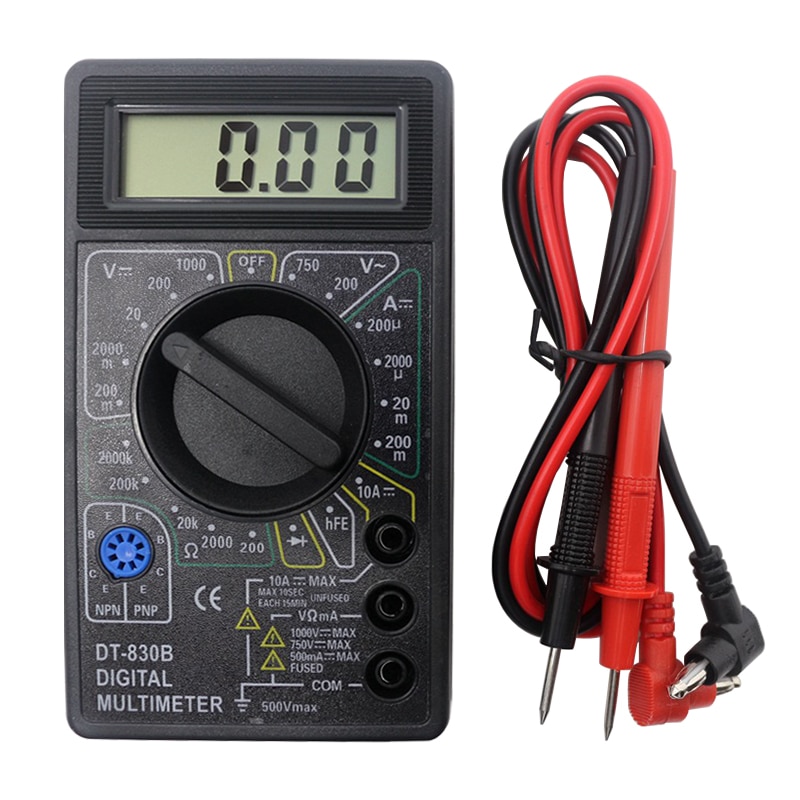Use an Analog or Digital Multimeter (DMM) to Diagnose Circuits, Measure Voltage and Current

|
Ads we feature have been independently selected and reviewed. If you make a purchase using the links included, we may earn a commission, which helps support the site. Thank you for your support.
I’ll be the first to admit it – electrical troubleshooting is not my favorite DIY task. Give me a woodworking project, give me a wall to tape and float; ahh, now you’re looking at a happy camper. But when I do have to jump in there chasing electrons, the first thing I reach for is my digital multimeter.
Digital VS Analog
Multimeters are also called multitesters, which is perhaps a more descriptive name. The digital models might be newer than the analog ones but the concept is the same. Like analog watches and clocks preceded digital ones, the same is true with electrical testing meters. The same might be said of aneroid vs digital barometers.
Is one better than the other? Oh, I don’t know. I’ve been told that the digital is more accurate than its analog cousin. I don’t really care though. I’m not likely to be measuring anything down to the nana-micro-tinyvolt level of granularity. Besides, I really like that little needle flicking around. I guess it reminds me of those old science fiction B movies. But alas, my old analog doesn’t work anymore so I’ve gone digital.
Multimeter Functions
For such a small gadget, the multitester really packs a punch with respect to functionality. Check out some of the things this little gizmo will do for you:
- Continuity Testing: This is probably the simplest function. No mystery here, it’s just what it sounds like. It checks to see if the electrical current is continuous from point A to point B.
- Voltage Testing: Again, very straightforward. For example, to test a light switch or an outlet, set the meter to AC (Alternating Current), set it to the voltage closest to what you’re measuring (110 – 120 for an outlet), and put one probe in each slot. Almost all portable electronics use DC (Direct Current). As a simple example, consider an AA battery. Connect the black probe to the meter’s ground or COM port and the red probe to mAVΩ (the 10A port is for large currents (greater than 200mA). Touch the probes with a little pressure against the positive and negative terminals of the AA battery. If you’ve got a new battery, you should see around 1.5V on the display (this battery is brand new, so its voltage is slightly higher than 1.5V).
- Measuring Resistance: It also tests resistance in a circuit or device. Your instruction manual will go into detail for your specific model, but basically just set the knob to Ohms, plug the black lead into COM jack, the red into the OHM jack. Then put the leads across the device in parallel and read the resistance. Note: If it reads 1 or -1, try testing in a larger range.
- Measuring Current: Reading current is one of the trickiest and most insightful readings in the world of embedded electronics, such as you might find in a smart Wi-Fi weather station. Why is it tricky? Because you have to measure current in series. Where voltage is measured by poking at VCC and GND (in parallel), to measure current it is necessary to physically interrupt the flow of current and then place your meter in-line.
Using a multimeter is not something that most of us will use every day but having one and knowing how to use it will come in handy time and time again. When choosing one, everyone has his preference, generally speaking, multimeters that have continuity are preferred. Every other feature is just icing on the cake.
Trending Articles
- Troubleshoot and Fix a Thermostat
- Top 10 Woodworking Tips for Projects
- How to Use a Barometer
- How to Replace a Light Switch
- Ryobi 18V ONE+ Power Tools Review
- Ambient Smart Wi-Fi Weather Station
Looking for more great content? Visit our main page or partner sites:
I offer article and blog-writing services. Interested? Contact me for a quote!
Did you find this article helpful? Millions of readers rely on information on this blog and our main site to stay informed and find meaningful solutions. Please chip in as little as $3 to keep this site free for all.




